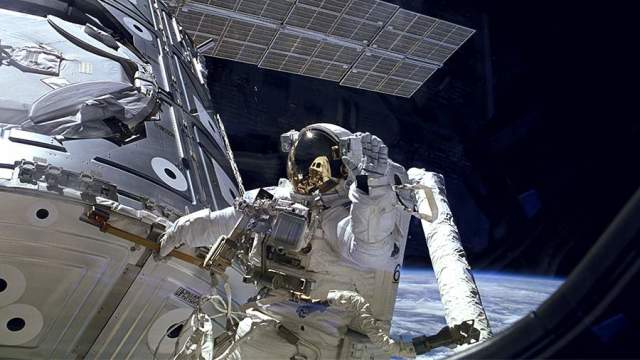The modules of the American segment of the International Space Station (ISS) have about 250 serious technical comments. This was announced on October 4 by Vladimir Solovyov, General Designer of the Rocket and Space Corporation Energia, at a conference at the Space Research Institute of the Russian Academy of Sciences.
According to the expert, the comments have not yet been closed.
"We are closely monitoring the technical condition of the American segment, because we are united," he said.
As Solovyov added, he recently met with his friend, who is responsible for the American segment of the station at NASA, Joel Montalbano. In the journal of unclosed comments there are entries on the design and on solar panels.
In the Russian segment of the station, 80% of the equipment of which has already exhausted its resource. Among the remarks is a leak in the intermediate chamber of the ZVEZDA module, which makes the docking port temporarily unavailable.
"If the equipment is behind the resource, it has every right to refuse...There are serious problems with connectors - there are all sorts of mushrooms, some other medical and biological things that really like insulation," the designer added.
At the end of September, NASA noted the absence of new damage to the radiator panel on the ISS. They were described back in 2012.
On September 23, ROSCOSMOS for the first time published the composition of the future Russian orbital station. The State Corporation has allocated funding for the development of requirements for it and its seven modules in the amount of 1.735 billion rubles.
In August, ROSCOSMOS CEO Dmitry Rogozin said that the Russian national orbital station would become the prototype of modules that would go to other planets in decades. He expressed confidence that the creation of a new Russian orbital station will cost less than "tens of billions of rubles." It takes about four years to finalize the ready-made base module for the future station. After that, a new node module will be added-a berth and a module with gyroscopes. This will become the basis of the appearance of the station, Rogozin added.
In July, during a meeting of the Presidium of the Scientific and Technical Council, the Council of Chief Designers concluded that due to the aging of a significant part of the ISS equipment, further operation of the Russian segment of the ISS after 2024 creates additional risks.

